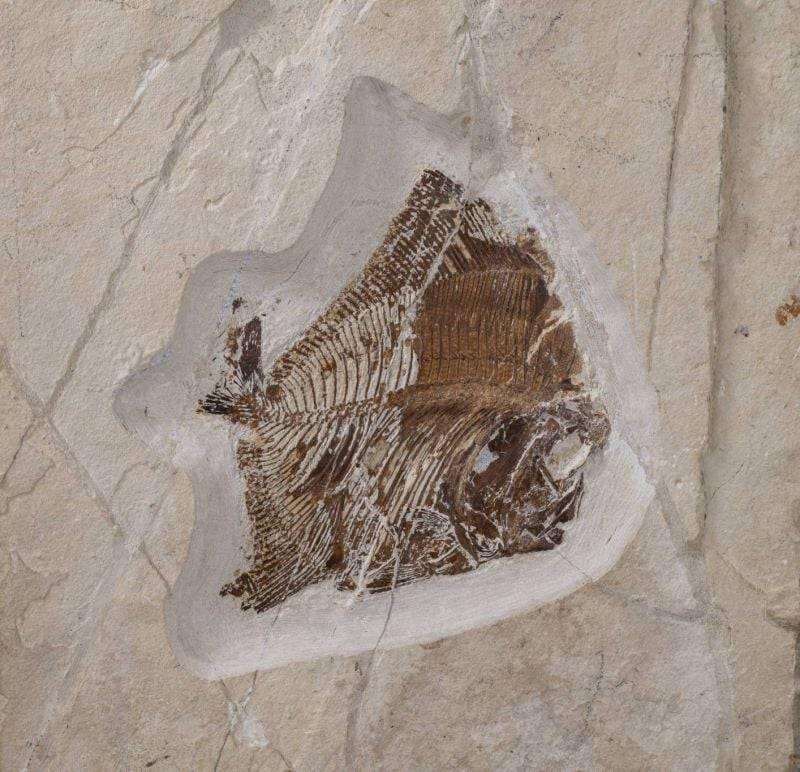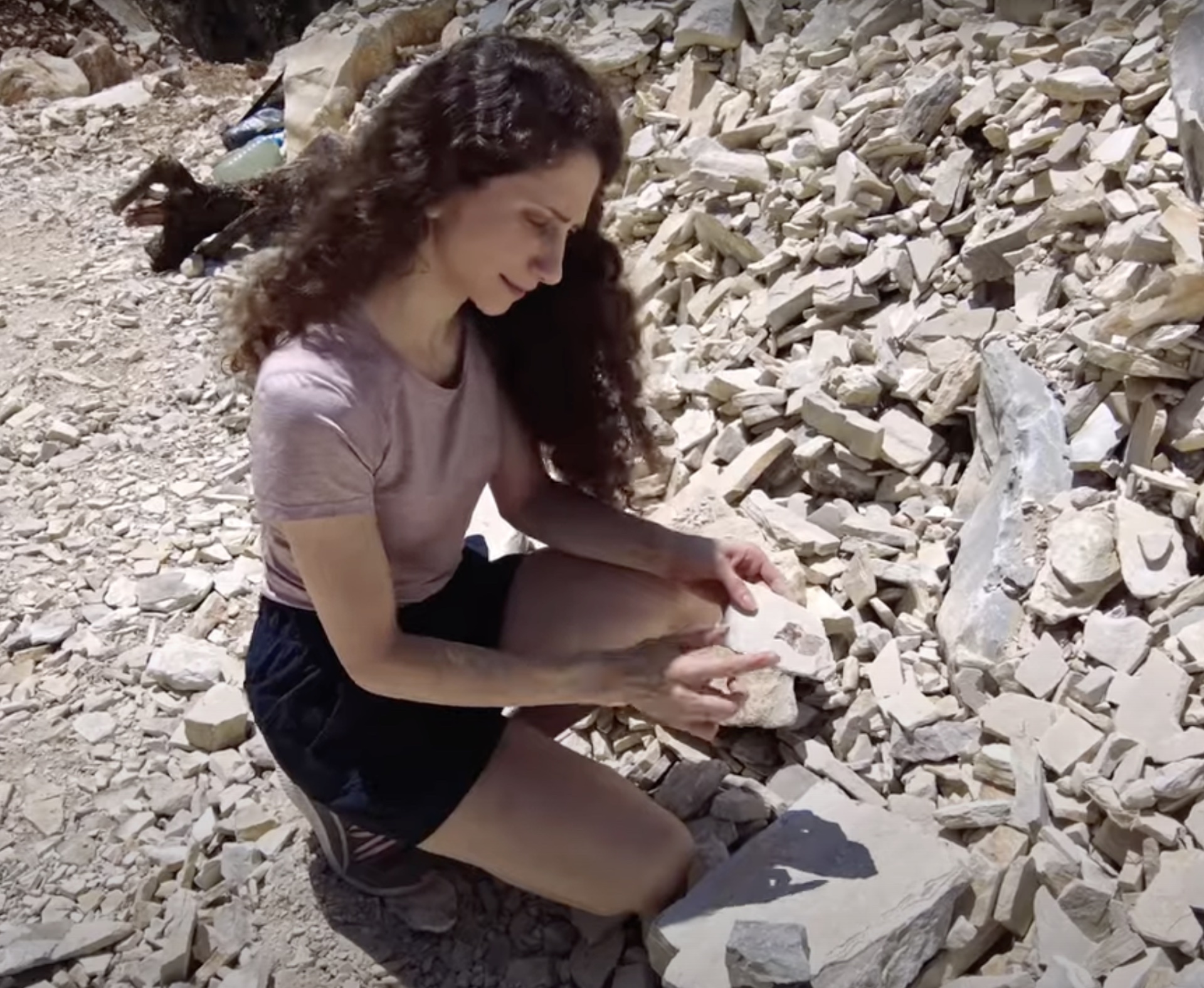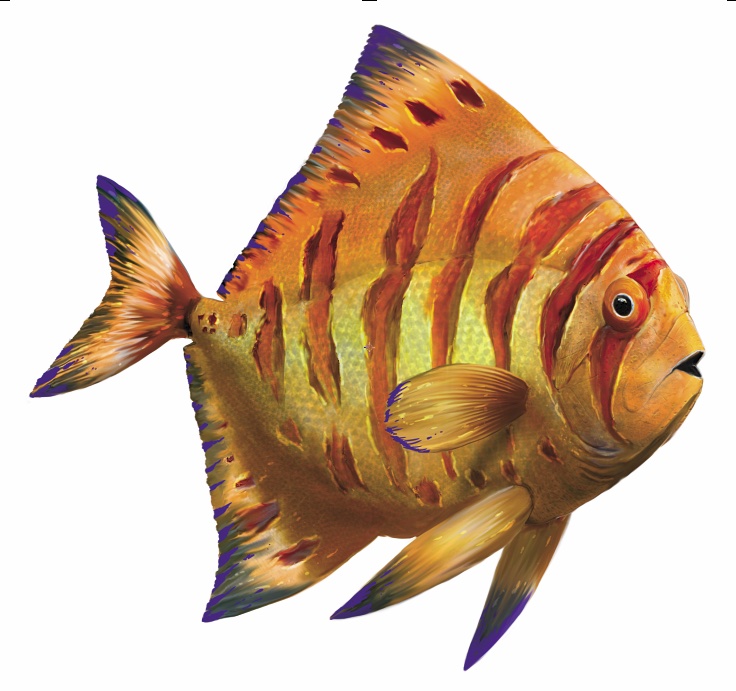
The fossil that intrigued scientists, from the Haqel deposit. (Credit: Photo provided by Tamara El Hossny)
This discovery is far from trivial: a fish fossil embedded in whitish colored rock, barely 10 centimeters long, in the Haqel deposits in the heights of Jbeil and dating back to 100.5 million to 93.9 million years ago, has intrigued scientists ever since it was discovered in 2022.
The task of identifying this unusual fossil was entrusted to Tamara El Hossny, a PhD researcher and paleontologist, as part of her doctoral thesis at the University of Geneva and the Geneva Natural History Museum. The results, which have been the subject of an article in the scientific journal Diversity co-authored with Lionel Cavin, are edifying.
“This study has enabled us to identify a new genus and a new species, endemic to Lebanon until further notice [since no similar fossils have been found elsewhere], given that this fish is based on a single Haqel specimen,” the Switzerland-based scientist told L’Orient-Le Jour.
In other words, this fish does not belong to any previously known prehistoric genus (a group of species that share common features) or species (individuals of different races and varieties, but that are similar and interbreed).
What is currently known about this unique specimen is that it is a so-called teleost fish — in other words a ray-finned vertebrate like the overwhelming majority of fish today.
“It has characteristics in common with other teleost fish, but some are unique,” said Hossny.
In order to determine its uniqueness, the PhD student compared this sample with other fossils found in Lebanon and Brazil, which also had enigmatic characteristics, but turned out to be different.
 The researcher at work. (Credit: Photo provided by Tamara El Hossny)
The researcher at work. (Credit: Photo provided by Tamara El Hossny)
Brightly colored, in warm waters
What exactly do we know about this strange fish?
“We can say that it lived in the Cretaceous, more precisely in the Cenomanian, around 100 million years ago, at the same time as the dinosaurs. It swam in the Tethys — an ancient ocean that formed around 150 million years ago — which partly covered the territory of present-day Lebanon. It swam in warm, oxygen-rich water.”
Scientists have given this newcomer the scientific name of Ypsiloichthys sibelleae, which derives from the Greek ypsilos for “deep” and ichthys for “fish,” in reference to its deep fins. The term sibelleae refers to the name of scientist Sibelle Maksoud, who has been studying the Haqel site for many years, in collaboration with the University of Geneva and local paleontologists and partners.
The excellent preservation of the fossil — almost every detail of the fish could be identified, according to the researcher — combined with the knowledge on the environment in which it lived [warm, oxygen-rich water, like tropical waters], has even made it possible to imagine what it might have looked like.
“We were able to reconstruct this fish with the help of the artist Alain Bénéteau, succeeding in imagining it as if it were alive, with bright colors that resemble those of tropical fish.”
 Reconstruction of the recently discovered fossil fish based on the study of the fossil and the analysis of the environment in which it lived. (Drawing by Alain Bénéteau)
Reconstruction of the recently discovered fossil fish based on the study of the fossil and the analysis of the environment in which it lived. (Drawing by Alain Bénéteau)
Such a discovery is of considerable interest from a paleontological point of view. “Studying this fish will enable us to improve our knowledge of the relationships between teleost fish, which are the most species-rich of all fish, and vertebrates in general,” said Hossny.
“Because despite the great variety that characterizes this group, the relationships between the species that make it up are not yet well defined,” she added.
She added, “Paleontology is like a jigsaw puzzle. Each discovery is a new piece added to the whole. And we’re never at the end of our surprises!”
Finally, she noted that the discovery of this new species is of undoubted importance at a national level. “This fish is a further proof of the wealth of fossils in the Lebanese outcrops and of their excellent preservation,” she said.
This article was originally published in French in L'Orient-Le Jour. Translation by Joelle El Khoury.